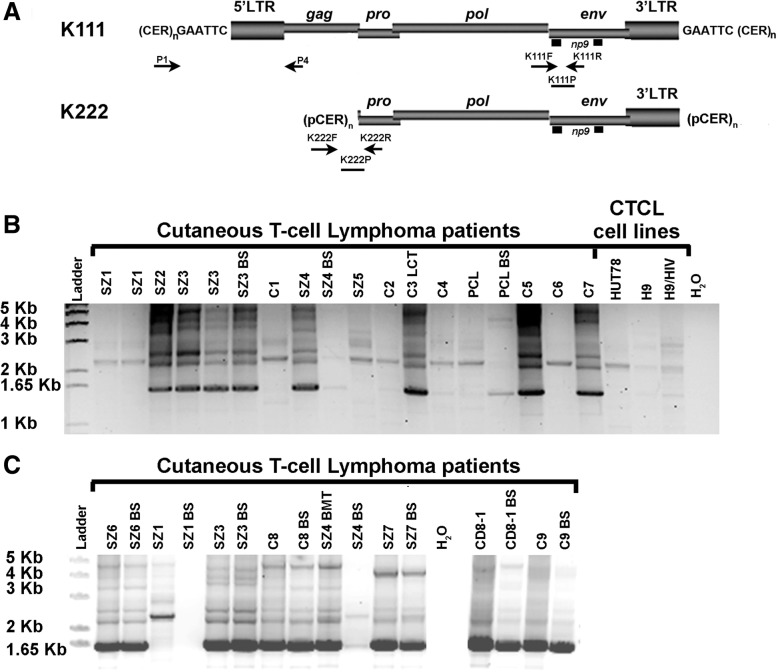Fig. 1.
Detection of centromeric K111 in the DNA of CTCL patients and cell lines. a Genomic organization of K111 and K222 and primers used for PCR are shown with arrows. P1 in the alpha repeat CER: D22Z3 and P4 in K111 gag detect the “+/+ K111 genotype”. K222F is in the flanking pCER element and K222R binds the pro portion of the K222 provirus. K222P binds to the boundary of the integration site and pro (b) K111 DNA from PBLs and buccal swabs (BS) from patients with either CTCL or Sézary syndrome or CTCL with large cell transformation labeled or CTCL that transformed to peripheral T-cell lymphoma labeled C, Sz, C3LCT or PCL respectively was amplified with primers P1 and P4. A strong band shown by an arrow at mw 1614 bp represents the +/+K111 genotype. Patients Sz1, C1, Sz5, C2, C4, PCL, and C6, as well as the cell line DNA from HUT78, H9 and H9/HTLVIII, have the −/− K111 genotype and show a 2279 bp product of HERV-K (HML-2) 3p25.3 amplified non-specifically with the primers P1 and P4 when K111 is not present. Patient SZ4 shows a faint 2279 bp band in her BS while her PBLs have the characteristic 1614 bp band. Bands of higher molecular weight represent other insertions of K111 into other centromeric repeats [25]. c The DNA from the PBL of selected patients is compared to that from a buccal swab (BS). Most patients show the same K111 amplification pattern in their PBLs as in their BS, indicating that the K111 is in the germ line. Patient SZ4 shows a −/−K111 genotype in her BS, while her PBLs derived from her bone marrow donor has a +/+K111 genotype. Patient CD8–1 is a patient with CD8 CTCL who is not part of this study, but illustrates the pattern produced from PCR of the DNA of other non CTCL patients have using P1 and P4 primers

